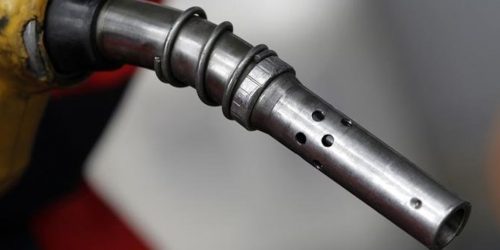The federal government’s refusal to raise the price of POL products on the recommendation of the Oil and Gas Regulatory Authority (Ogra) for the period 15 to 28 February was made possible not through raising subsidies (which would have been opposed by multilaterals, including the International Monetary Fund, on the legitimate economic grounds that it would be an untargeted subsidy) but through a downward adjustment in petroleum levy collection. This gives rise to three rather disturbing observations.
First, Ogra recommends increase or decrease in the prices of POL products by taking account of any fluctuation in the international prices of these commodities over which it has no control as well as the rupee-dollar parity which, as per the agreement with the International Monetary Fund, is market-based and the State Bank of Pakistan (SBP) allowed to intervene only when faced with disorderly market conditions. However, SBP may per force be obliged, at times, to engage in quasi-fiscal activities that could include sterilized foreign exchange intervention under the guise of disorderly market conditions. It is important to note that independent economists continue to maintain that the rupee may be undervalued today – the real effective exchange rate was 121 in June 2017, with the IMF maintaining in one of its quarterly reviews on the then ongoing programme that it was overvalued from between 5 and 20 percent, and plummeted to 97.1 (provisional) in October 2020 though official sources claim this is provisional and has yet to update data for the past three months.
Equally important is the fact that reliance on revenue remains on (i) the low hanging fruit, which sadly implies increasing dependence on indirect taxes (sales tax, excise duty and customs duty passed onto the end consumers in its entirety) whose incidence is greater on the poor than on the rich. Sales tax on POL remained unchanged at 17 percent. Moreover, in recent years withholding taxes which account for over 70 percent of direct tax collections are in reality indirect taxes, for example, sales tax on services; (ii) the reliance on petroleum levy has been enhanced in the current year’s budget to a historic high. Thus while last year the petroleum levy was budgeted to generate 216 billion rupees and in effect generated 260 billion rupees in 2020-21, it is projected to generate 450 billion rupees for the government. It is this component of the government revenue that has been slashed from the 21.04 rupee per litre on petrol to 17.97 rupees per litre. The tax aspect of pricing of POL products has contributed to the inability of Pakistan’s productive sectors to compete internationally and/or in the local markets due to smuggling across our large borders and has necessitated extending incentives in terms of cheap electricity at a cost to the exchequer as well as further compromising the performance of the energy sector.
In this context, it is relevant to note that Prime Minister Imran Khan when in opposition had consistently denigrated the high taxes on POL products and one would hope he takes his team to task for continuing this practice.
And finally, if the prices of oil continue to rise internationally as are projected as the vaccine is on the market especially in developed countries, our major trading partners, and given that the programme with the IMF is now back on track one wonders how long the government would be able to absorb the lower than budgeted revenue collections from any source, but especially from petroleum levy that accounts for 8 percent of total tax collections in 2020-21.
The revenue shortfall last year was made up by an inordinate rise in SBP profits (935 billion rupees as noted in the consolidate federal and fiscal budgetary operations released in August 2020 against the 650 billion rupees projected in the budget documents three months before under revised estimates for 2019-20). The recent focus on privatisation appears to be this year’s bridge with respect to revenue shortfall though this appears unlikely given workers’ resistance and the international investment climate.






